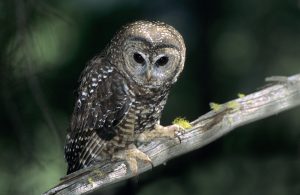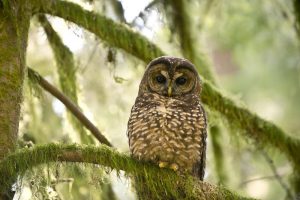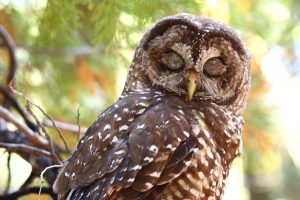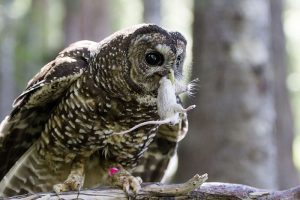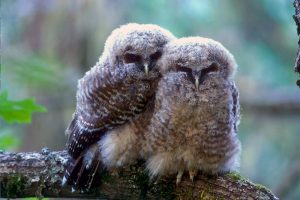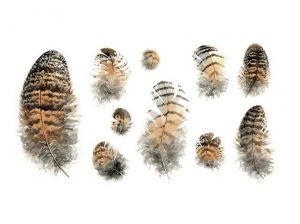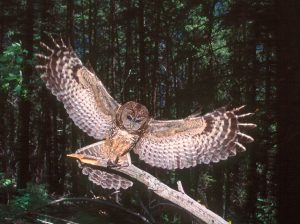Spotted Owl
The medium-sized spotted owl is known for its appearance and hence the name. The species is facing habitat loss to a mentionable extent due to deforestation.
Scientific Classification
| Kingdom | Animalia |
| Phylum | Chordata |
| Class | Aves |
| Order | Strigiformes |
| Family | Strigidae |
| Genus | Strix |
| Scientific Name | Strix occidentalis |
Quick Information
| Also Knows As | Chouette tachetée in French, Cárabo Californiano in Spanish |
| Description | Size: 17-18.9 in (43.1-48 cm) Wingspan: 39.8-45 in (101-114 cm) Color: Dark brown body with white spots throughout, pale X pattern located diagonally between eyes |
| Distribution | From Southwestern British Columbia to California |
| Habitat | Coniferous forests |
| Subspecies | S. o. S. o. lucida or Mexican spotted owl S. o. occidentalis or California spotted owl |
| Sounds & Calls | Whistling and hooting, sometimes like barking, “hup,hoo-hoo” |
| Lifespan | 16-17 years |
| Diet | Flying squirrels, wood rats, deer mice, snowshoe rabbits, and voles |
| Adaptations | The strong beak is suitable for hunting its prey. The thick layers of feathers help them withstandthe cold weather |
| Predators | Great horned owls, Northern goshawks, and red-tailed hawks |
| IUCN Conservation Status | Near Threatened |
Behavior
- The nocturnal bird sometimes forage during the day
- They fly and shift up and down to adjust themselves with the changing temperatures
- The spotted owl prefers to stay alone except for the breeding season
Mating and Reproduction
The copulation season usually starts from spring and lasts till either summer or fall. Males and females form monogamous pairs and after 4-6 weeks females lay white to grayish 1-4 eggs sizing around 2 inches. They are incubated for 28-32 days by females.
Life-cycle
Hatchlings are born blind and usually covered in down. They start moving and flying out of the nest after 4-5 weeks although they stay in touch with their parents for another 2-3 months. The young owls reach sexual maturity around the age of 2.
Interesting Facts
- Spotted owls are often confused with barred owls and in some areas, two species are crossed to beget “sparred owls”
- Adult spotted owls not necessarily breed every year, rather they take a
break that can be as long as 5-6 years - Roosting owls preen each
others - The oldest reported spotted owl was a female aging 21 years
References
- https://www.allaboutbirds.org/guide/Spotted_Owl/overview
- http://naturemappingfoundation.org/natmap/facts/spotted_owl_712.html
- https://www.audubon.org/field-guide/bird/spotted-owl
- https://birdsoftheworld.org/bow/species/spoowl/cur/introduction
Published on April 1st 2019 by Sahana Kanjilal under Coniferous Forest Animals.
Article was last reviewed on 17th July 2023.


